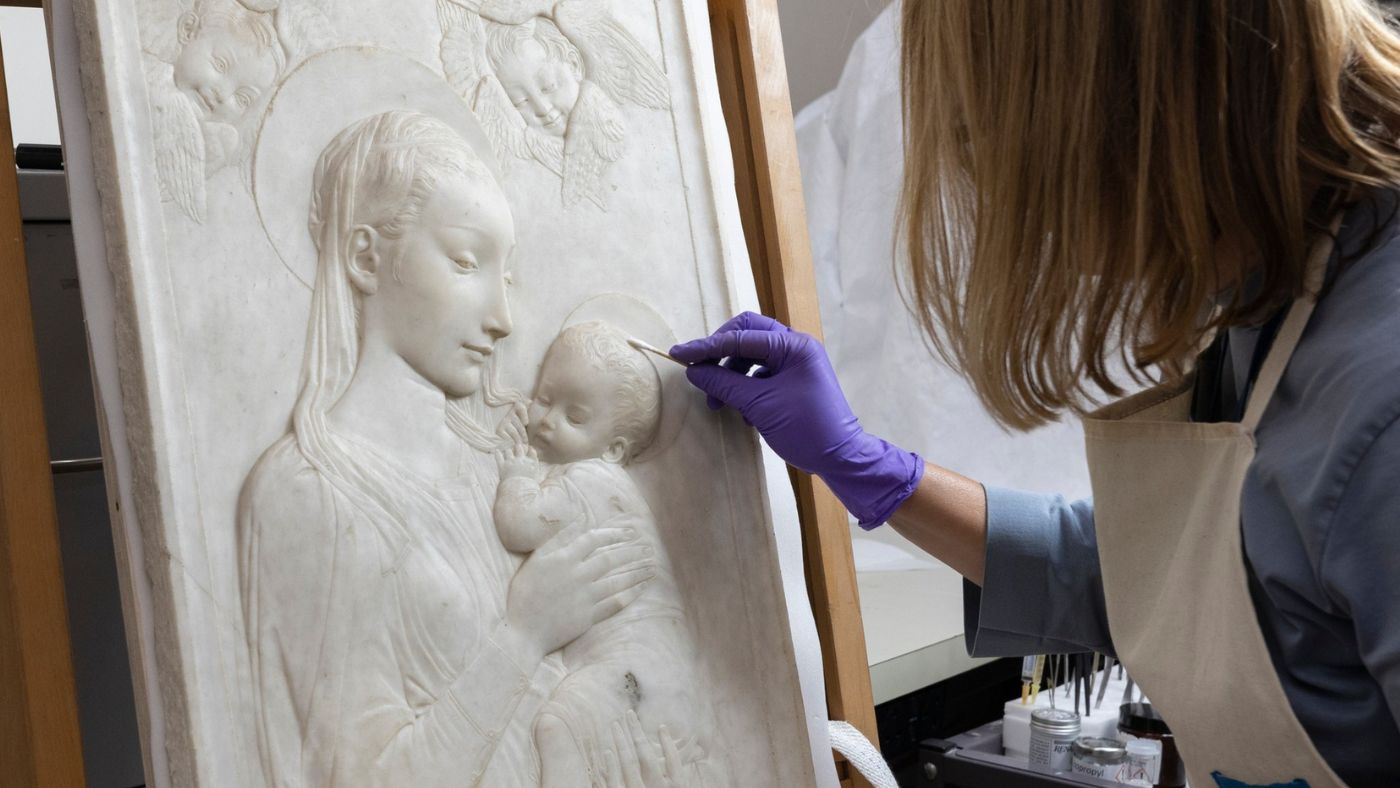Donatello: Sculpting the Renaissance review – a ‘first-rate exhibition’
The V&A has opened ‘the first substantial exhibition’ of the Italian sculptor’s work ever mounted in Britain

Donatello (c.1386-1466) was “the most revolutionary of all Italian sculptors”, said Laura Cumming in The Observer. “Industrious”, “prolific” and long-lived, the Florence-born master is credited with almost single-handedly creating the sculptural aesthetic of the Italian Renaissance and paving the way for Michelangelo.
“Donatello’s most famous figure is probably the young David in black bronze, the first standing male nude in Renaissance art.” Like no one before him, he “could turn stone into something as supple as warm skin and velvet”, creating “some of the strangest sculptures in art” – “outlandish hybrids of ancient and modern” that fused medieval Catholic imagery with any number of tricks borrowed from classical tradition.
This month, the V&A opened “the first substantial exhibition” of his art ever mounted in Britain, a show that promises to be an “epochal” event. Bringing together a wealth of key sculptures created in a wide range of materials, from marble to bronze to wood, as well as examples of work by Donatello’s followers and contemporaries, it explores the entirety of his trailblazing career. For any art lover, it represents “the chance of a lifetime”.
The Week
Escape your echo chamber. Get the facts behind the news, plus analysis from multiple perspectives.

Sign up for The Week's Free Newsletters
From our morning news briefing to a weekly Good News Newsletter, get the best of The Week delivered directly to your inbox.
From our morning news briefing to a weekly Good News Newsletter, get the best of The Week delivered directly to your inbox.
By any standard, this is a “first-rate exhibition”, said Alastair Sooke in The Daily Telegraph. Highlights abound: we see an early marble sculpture of David on loan from Florence; “a finger-sucking Christ practically fused with his mother”; and, the “star turn” here, a “notoriously peculiar” bronze of a dancing cherub known as the Attis-Amorino (c.1435-40). Complete with “winged sandals”, “tiny tail” and “odd leggings that leave his genitals exposed”, this “pint-sized hedonist” is an intoxicatingly odd creation.
Donatello, it is rightly stressed, was preternaturally gifted at manipulating materials: originally trained as a goldsmith, he was as adept at metalwork as he was fashioning images from terracotta or “hard, crystalline marble”. Frequently, the results are alchemical. His reliefs, often just a few millimetres deep, conjure “an astonishing sense of spatial recession”.
“There’s a limit, however, to the number of seraphic Virgins and Child you can take,” said Mark Hudson in The Independent. After a while, the show’s masterpieces begin to “blur into one”. Moreover, there are confusing ambiguities of attribution: I lost count of the number of works described as “possibly by Donatello”.
Nevertheless, many exhibits are powerful enough to stop you in your tracks: a “blackened bronze” of the crucifixion from Padua is an “essay in ravaged muscularity”; the so-called Madonna of the Apple endows the “sprawling, sulky” infant Christ with “almost casual, everyday realism”. Donatello himself remains elusive throughout. Yet the works assembled here are remarkable enough to make this “an essential exhibition”.
A free daily email with the biggest news stories of the day – and the best features from TheWeek.com
-
 The ultimate films of 2025 by genre
The ultimate films of 2025 by genreThe Week Recommends From comedies to thrillers, documentaries to animations, 2025 featured some unforgettable film moments
-
 Political cartoons for January 3
Political cartoons for January 3Cartoons Saturday's political cartoons include citizen journalists, self-reflective AI, and Donald Trump's transparency
-
 Into the Woods: a ‘hypnotic’ production
Into the Woods: a ‘hypnotic’ productionThe Week Recommends Jordan Fein’s revival of the much-loved Stephen Sondheim musical is ‘sharp, propulsive and often very funny’
-
 The ultimate films of 2025 by genre
The ultimate films of 2025 by genreThe Week Recommends From comedies to thrillers, documentaries to animations, 2025 featured some unforgettable film moments
-
 Into the Woods: a ‘hypnotic’ production
Into the Woods: a ‘hypnotic’ productionThe Week Recommends Jordan Fein’s revival of the much-loved Stephen Sondheim musical is ‘sharp, propulsive and often very funny’
-
 The best food books of 2025
The best food books of 2025The Week Recommends From mouthwatering recipes to insightful essays, these colourful books will both inspire and entertain
-
 Art that made the news in 2025
Art that made the news in 2025The Explainer From a short-lived Banksy mural to an Egyptian statue dating back three millennia
-
 Nine best TV shows of the year
Nine best TV shows of the yearThe Week Recommends From Adolescence to Amandaland
-
 Winter holidays in the snow and sun
Winter holidays in the snow and sunThe Week Recommends Escape the dark, cold days with the perfect getaway
-
 The best homes of the year
The best homes of the yearFeature Featuring a former helicopter engine repair workshop in Washington, D.C. and high-rise living in San Francisco
-
 Critics’ choice: The year’s top 10 movies
Critics’ choice: The year’s top 10 moviesFeature ‘One Battle After Another’ and ‘It Was Just an Accident’ stand out